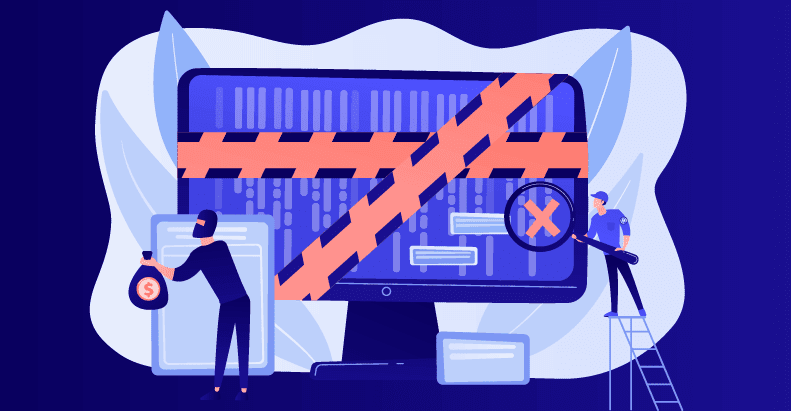Penetration Testing Unveiled: Going Beyond Surface-Level Security

- October 2, 2023
- admin
In the relentless pursuit of cybersecurity resilience, organizations are perpetually engaged in a high stakes battle to safeguard their digital assets against an ever-evolving and increasingly sophisticated threat landscape. Amid this digital arms race, penetration testing emerges as a strategic and proactive approach that transcends surface-level security assessments. In this comprehensive guide, we embark on a deep dive into the multifaceted world of penetration testing, elucidating its critical role in fortifying digital defenses and dissecting the nuanced layers of this cybersecurity practice.
The Unyielding Imperative of Penetration Testing
Guardians of the Digital Realm
In today’s hyperconnected world, organizations, irrespective of their size
or industry, face an unending barrage of cyber threats. These threats are relentless, perpetually probing
for vulnerabilities within digital fortresses. The consequences of a successful breach are dire,
encompassing data breaches, substantial financial losses, regulatory fines, and severe reputational
damage. To protect their digital perimeters effectively, organizations must adopt a proactive stance, and
this is precisely where penetration testing steps into the fray.
Deciphering the Essence of Penetration Testing
At its core, it is a simulated cyberattack executed on an organization’s digital infrastructure. Unlike malicious hackers, penetration testers, often referred to as ethical hackers, operate with explicit consent from the organization. Their primary objective is to unveil vulnerabilities and weaknesses in systems, applications, and networks before malicious actors can exploit them.
The Intricacies of Penetration Testing Phases
Meticulous Preparation
The journey commences with meticulous planning.
In this phase, the scope of the assessment is delineated, objectives are finely honed, and rules of
engagement are meticulously established. The team outlines their strategies and
methodologies to ensure a comprehensive evaluation.
In-Depth Reconnaissance
The reconnaissance phase is dedicated to gathering information about the target environment. This encompasses identifying potential entry points, scrutinizing the organization’s digital footprint, and comprehending the technologies in active deployment. This phase serves as the foundational bedrock for subsequent testing stages.
Diving into the Attack
This is where the real evaluation transpires. Testers employ a gamut of tools and techniques to replicate real-world attacks. They endeavor to exploit vulnerabilities, escalate privileges, and access sensitive data. The ultimate goal is to unearth and illuminate as many security weaknesses as conceivable.
Rigorous Analysis
During and after the attack phase, testers engage in methodical analysis. They assess the repercussions of successful attacks, meticulously prioritize vulnerabilities according to their severity, and furnish organizations with meticulously detailed reports. This transparent and comprehensive communication is vital for organizations to gain an accurate understanding of their current security posture.
The Crucial Reporting Phase
Testers present their findings to the organization’s stakeholders. The report typically encompasses an executive summary tailored for non-technical decision-makers and comprehensive technical insights aimed at IT and security teams. This clear and transparent communication is pivotal for organizations to comprehend their current security posture comprehensively.
Penetration Testing Methodologies
Black-Box:
This approach emulates the perspective of external attackers, where testers have limited or zero prior knowledge of the target environment. It assesses an organization’s capability to detect and thwart unknown threats, reflecting the real-world scenario.
White-Box:
White-box testers possess a profound understanding of the target environment, including its system architecture, source code, and network configurations. This approach enables an in-depth examination of the inner workings of systems and applications.
Gray-Box:
It strikes a balance between black-box and white-box approaches. Testers operate with partial knowledge of the environment, simulating the perspective of an attacker equipped with some insider information.
The Multifaceted Benefits of Penetration Testing
Vulnerability Revelation
It has a distinctive capacity to unveil vulnerabilities that might remain concealed during conventional security assessments. This includes obscure or emerging threats that automated scanners and routine assessments might inadvertently overlook.
Realistic Threat Simulation
By mirroring real-world attack scenarios, it equips organizations with a pragmatic understanding of their actual security posture. This heightened realism facilitates superior preparation and risk mitigation strategies.
Compliance and Regulatory Adherence
In numerous industries, and mandated by various regulatory bodies, regular security assessments, including penetration testing, are a prerequisite for ensuring compliance with stringent security standards. Non-compliance can result in severe financial penalties and reputational damage.
Enhanced Incident Response
The vulnerabilities and weaknesses unearthed enable organizations to fine-tune their incident response protocols. This proactive approach minimizes the potential impact of actual cyberattacks and bolsters an organization’s capacity to respond effectively.
Challenges and Considerations in Penetration Testing
Resource Intensity
It demands a significant investment of time, financial resources, and specialized expertise. Organizations must allocate these resources judiciously to derive maximum value from the process.
Scope Definition
Precisely delineating the scope of a penetration test is paramount. Without a meticulously defined scope, testing efforts can devolve into aimlessness, resulting in incomplete and less effective assessments.
Potential System Impact
If vulnerabilities are successfully exploited, it can disrupt normal operations, potentially leading to downtime or system instability. Organizations must be prepared to manage these potential disruptions.
The Imperative of Continuous Testing
The dynamism of cyber threats necessitates it to adapt to evolving risks. A one-time assessment is inherently inadequate to maintain robust security in the face of ever-shifting threats.
In a landscape where cyber threats mutate and evolve with alarming rapidity, it stands
as an unwavering guardian of digital assets. It offers organizations an invaluable opportunity to identify vulnerabilities, fortify defenses, and proactively prepare for the ever-changing threat landscape. By embracing it as a foundational pillar of their cybersecurity strategy, organizations can bolster their digital ramparts, navigate the digital realm with unshakable confidence, and emerge as formidable sentinels against the relentless tide of cyber threats











